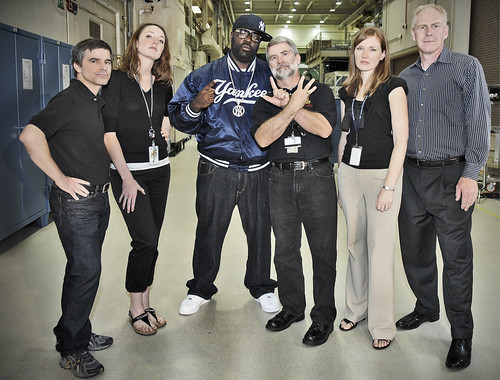Awesomeness Round-up – 8/9/10
- By Sara Mitchell
- August 9, 2010
- Comments Off on Awesomeness Round-up – 8/9/10
Our big news this past week? Webb Gotchu! But if you’ve seen our coverage, and the other behind-the-scenes coverage at Geeked on Goddard… how about Bad Astronomy’s coverage of our coverage? Or perhaps the Oakland Skepticism Examiner’s coverage of Phil’s coverage of our coverage? Whew.
I guess it would be cheating to count those as half of this week’s links? Alright, onward!
The real big news was the enormous amount of solar activity last week on the Sun’s Earth-facing side. We saw a C3-class solar flare and a coronal mass ejection (CME) that sent particles flying toward the Earth. You can see an ultraviolet image from SDO (above), plus animations of the activity (below).
We want to give a shout-out to one of our own – the cover story of September’s issue of Astronomy about the James Webb Space Telescope (“The next great space telescope takes shape”) was written by Francis Reddy, the Astrophysics Science Division’s science writer and a frequent contributor to our podcasts. You can’t read the article online, but you can take a peek at the table of contents and look for it on the newsstands!
This fantastic composite image combines data from all three Great Observatories: Chandra X-ray Observatory (blue), the Hubble Space Telescope (gold and brown), and the Spitzer Space Telescope (red). What are you looking at? The collision of the Antennae galaxies! This composite shows the strengths of multiwavelength observations, as each satellite contributes an important piece of the picture – Chandra sees the hot dust and matter falling onto black holes, Spitzer sees the warm dust clouds heated by newborn stars, and Hubble sees old stars and star-forming regions. It takes all three satellites and their respective portions of the electromagnetic spectrum to see it all.
And there’s an animation, too!
The European Southern Observatory just released a three-dimensional recontruction of Supernova 1987A, using the SINFONI instrument on the Very Large Telescope (VLT). Given that SN 1987A was the first naked-eye supernova observed in the era of modern astronomy, it’s provided a lot of valuable “firsts” in supernova research… and here’s another!
Finally, don’t forget that this week is the Perseid meteor shower! JPL offers more info and some meteor watching tips. Happy skygazing!






